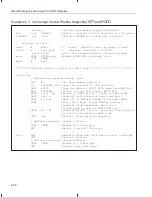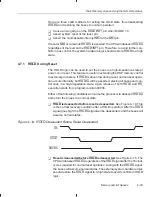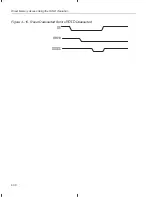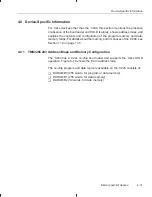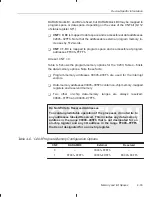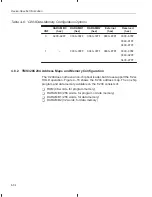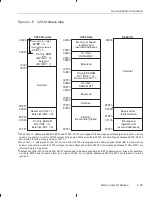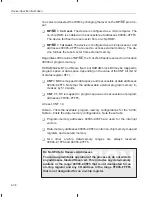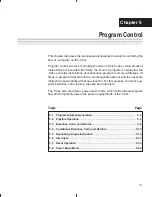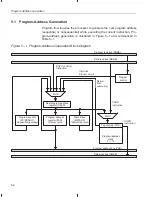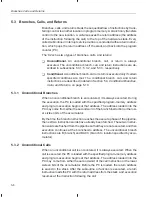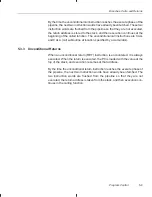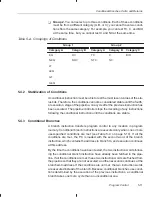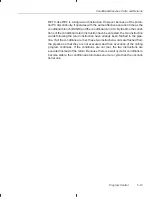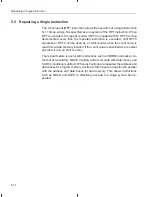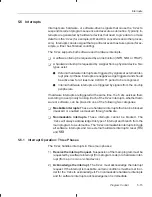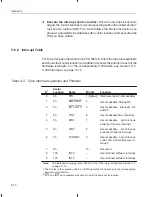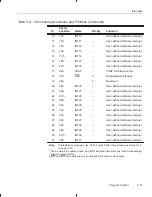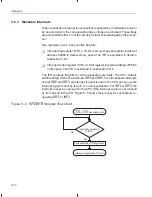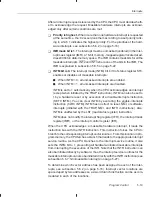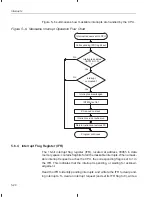
Program-Address Generation
5-5
Program Control
-
PSHD and POPD. These instructions allow you to build a stack in data
memory for the nesting of subroutines or interrupts beyond eight levels.
The PSHD instruction pushes a data-memory value onto the top of the
stack. The POPD instruction pops a value from the top of the stack to data
memory.
Whenever a value is pushed onto the top of the stack (by an instruction or by
the address-generation logic), the content of each level is pushed down one
level, and the bottom (eighth) location of the stack is lost. Therefore, data is
lost (stack overflow occurs) if more than eight successive pushes occur before
a pop. Figure 5–2 shows a push operation.
Figure 5–2. A Push Operation
Before Instruction
After Instruction
Accumulator
Accumulator
or memory
7h
or memory
7h
location
location
2h
7h
5h
2h
Stack
3h
Stack
5h
0h
3h
12h
0h
86h
12h
54h
86h
3Fh
54h
Pop operations are the reverse of push operations. A pop operation copies the
value at each level to the next higher level. Any pop after seven sequential
pops yields the value that was originally at the bottom of the stack because,
by then, the bottom value has been copied upward to all of the stack levels.
Figure 5–3 shows a pop operation.

